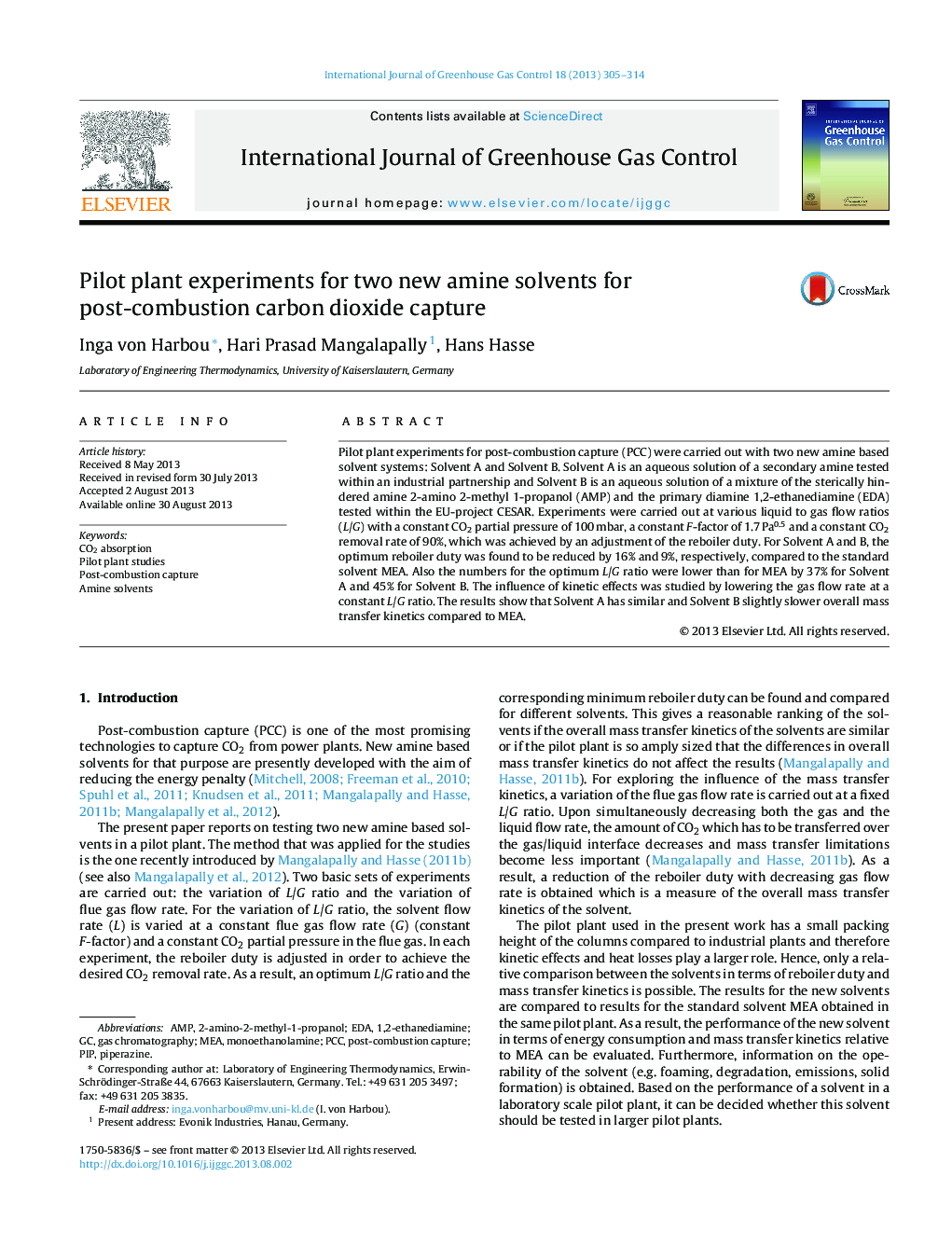| کد مقاله | کد نشریه | سال انتشار | مقاله انگلیسی | نسخه تمام متن |
|---|---|---|---|---|
| 1743171 | 1522003 | 2013 | 10 صفحه PDF | دانلود رایگان |

• Pilot plant studies for two new aqueous amine solvents for PCC are presented.
• Solvent A and Solvent B show a 16% and 9% lower regeneration energy than MEA.
• The optimum L/G ratio is by 37% respectively 45% lower than for MEA.
• Solvent A has similar and Solvent B slightly slower mass transfer kinetics than MEA.
Pilot plant experiments for post-combustion capture (PCC) were carried out with two new amine based solvent systems: Solvent A and Solvent B. Solvent A is an aqueous solution of a secondary amine tested within an industrial partnership and Solvent B is an aqueous solution of a mixture of the sterically hindered amine 2-amino 2-methyl 1-propanol (AMP) and the primary diamine 1,2-ethanediamine (EDA) tested within the EU-project CESAR. Experiments were carried out at various liquid to gas flow ratios (L/G) with a constant CO2 partial pressure of 100 mbar, a constant F-factor of 1.7 Pa0.5 and a constant CO2 removal rate of 90%, which was achieved by an adjustment of the reboiler duty. For Solvent A and B, the optimum reboiler duty was found to be reduced by 16% and 9%, respectively, compared to the standard solvent MEA. Also the numbers for the optimum L/G ratio were lower than for MEA by 37% for Solvent A and 45% for Solvent B. The influence of kinetic effects was studied by lowering the gas flow rate at a constant L/G ratio. The results show that Solvent A has similar and Solvent B slightly slower overall mass transfer kinetics compared to MEA.
Journal: International Journal of Greenhouse Gas Control - Volume 18, October 2013, Pages 305–314